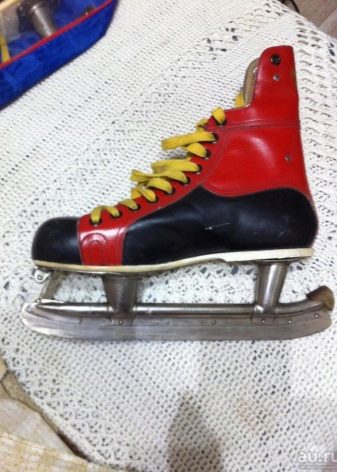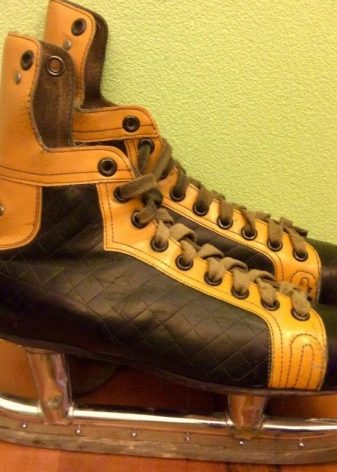All about Soviet skates
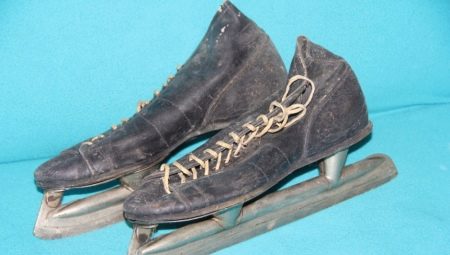
It is no secret that during the Soviet era there were not so many entertainments. These include reading books, visiting various circles, or just walking in the parks. The latter option was often the most common. However, there was one more activity that could bring joy to almost everyone - ice skating. We went to the skating rink with friends, with family, or even on a date with our passion. An important part of this event was equipment - skates. Read about what they were in the Soviet period in this article.
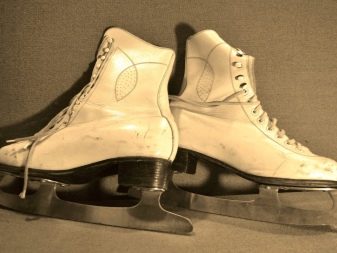
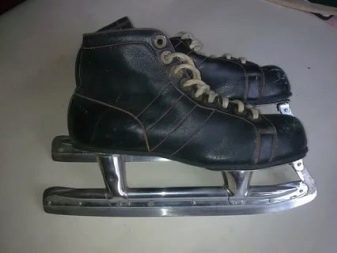
Peculiarities
Everyone knows that Soviet skates were uncomplicated, but they were distinguished by their strength and long service life. Sometimes the equipment was made independently, and only in this case, from time to time, some of its parts required replacement. The runners had to be sharpened, usually done at the nearest ice rink, which took 5 minutes.
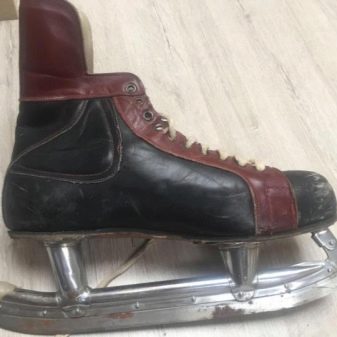
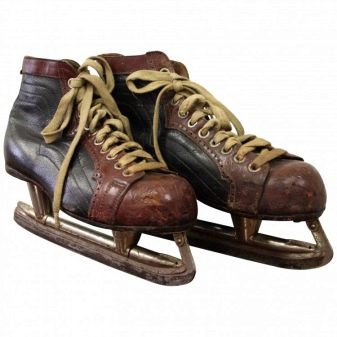
In the USSR, for the smallest fans of skating, they did not rush to immediately acquire skates. Usually the first skates were made by ourselves. In the 1940-50s, the number of types of skates was very small, only later, with the growing popularity of hockey and figure skating, they began to be sold everywhere, and the number of varieties increased. All skates made in the USSR were distinguished by the high quality of the blades.
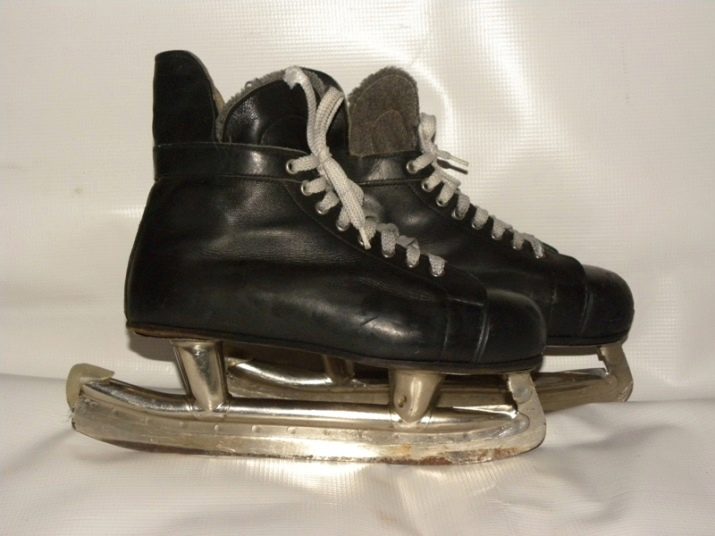
They were also characterized by the presence of a sturdy boot frame - it was quite firm in order not to allow the ankle to bend incorrectly or unexpectedly. This prevented many injuries.
Species overview
For the youngest skating enthusiasts, "Snow Maidens" were purchased. They could be purchased at special points of sale, but they were often made on their own.For this, runners were bought, which were melted together with a metal plate. They were attached to ordinary boots or felt boots with belts that were wrapped around the shoe, pressing the runners to it and tightly fixing the structure.
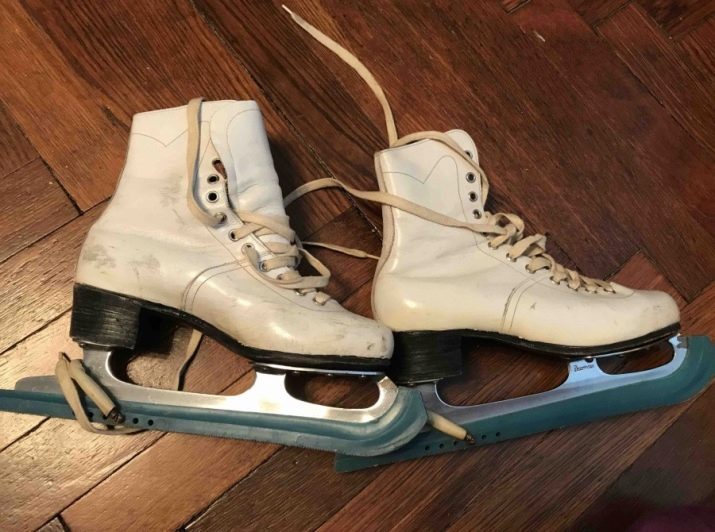
Among adolescents, "blowers" were common. A distinctive feature is short boots, but long runners. They were often uncomfortable to wear - they were too large. I had to put in fabric, cotton wool or insoles.
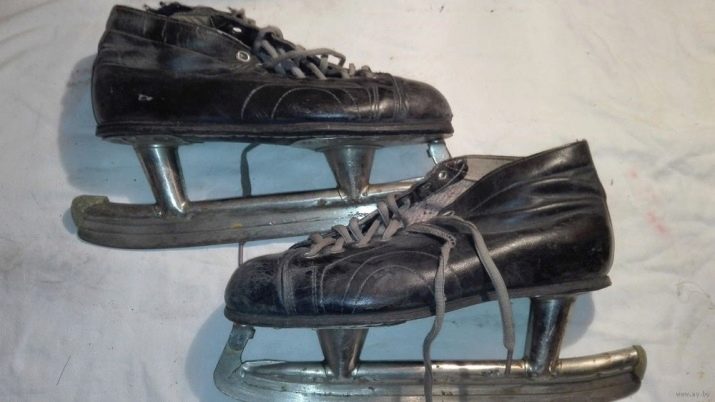
Young guys have already skated without children's shoes with runners, they bought "boxes" intended for playing hockey. Their distinguishing feature is the presence of a solid box (frame) in the main part, which is why they got their name. These skates were tall. They provided the ability to perform a large number of maneuvers. Their blade was sharpened to one side. This feature made it possible to increase the speed of movement.
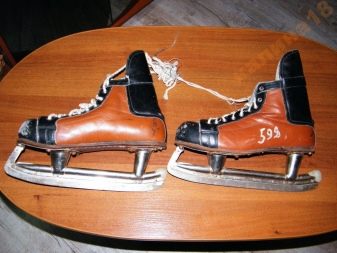
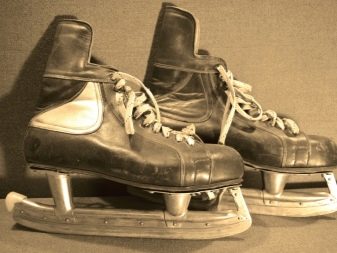
There were also models for girls - these are good old figure skates. They were usually white and graceful. Their appearance has practically not changed since those times. A distinctive feature is the presence of several teeth on the tip of the front part of the runners. Thanks to this detail, it was possible to brake and also spin in place.
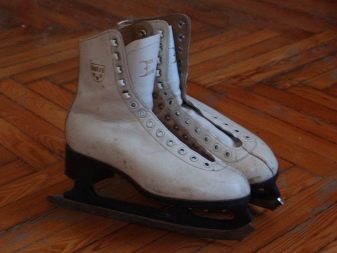
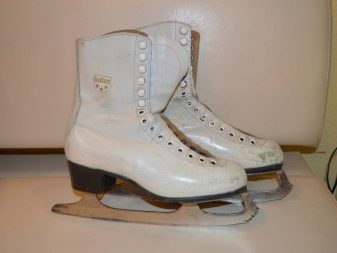
Description of manufacturers
One of the most famous manufacturers to this day is Salvo. The production was in Estonia. The first batch was produced after 1972 and was specially designed for the CSKA ice hockey team. It was considered a great success to acquire a pair of skates from this company at that time. After the 1980s, the manufacturer improved the quality of its products - the blade of the skates became one-piece.
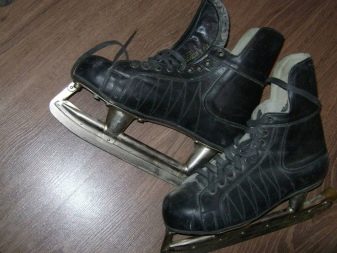
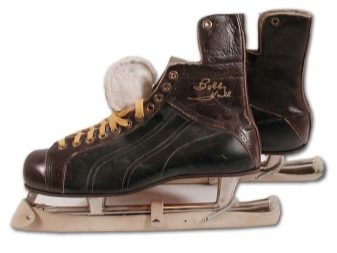
For a long time, the leader in this niche during the Soviet era was the manufacturer "Dynamo". It still exists, but it has already surrendered its positions. Often, hockey players and figure skaters were shod by this manufacturer, his homeland is Vladikavkaz. Basically, three types of skates were produced - figured, hockey and cast. The latter were used only by professional athletes.
Closer to the collapse of the USSR, Czech, Finnish and even Swiss skates began to be imported, which quickly ousted the Soviet manufacturer.
